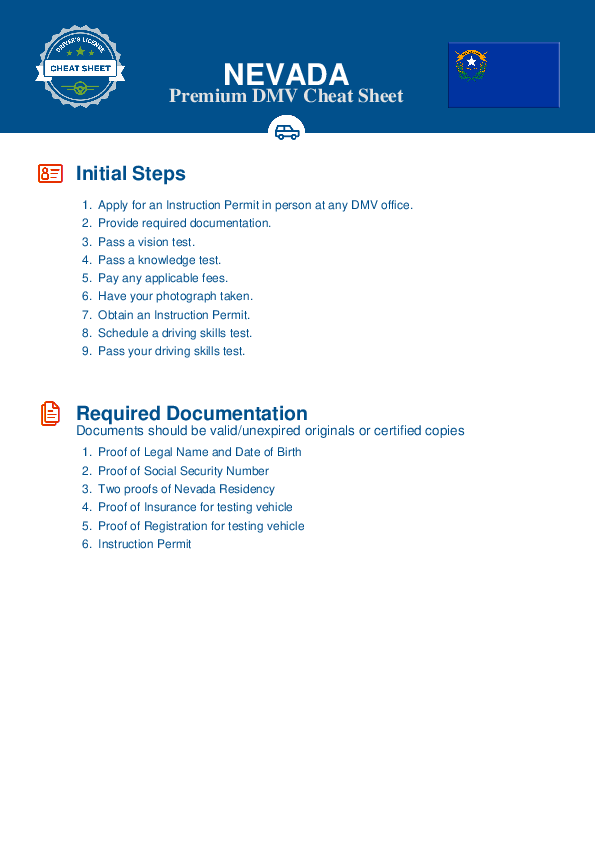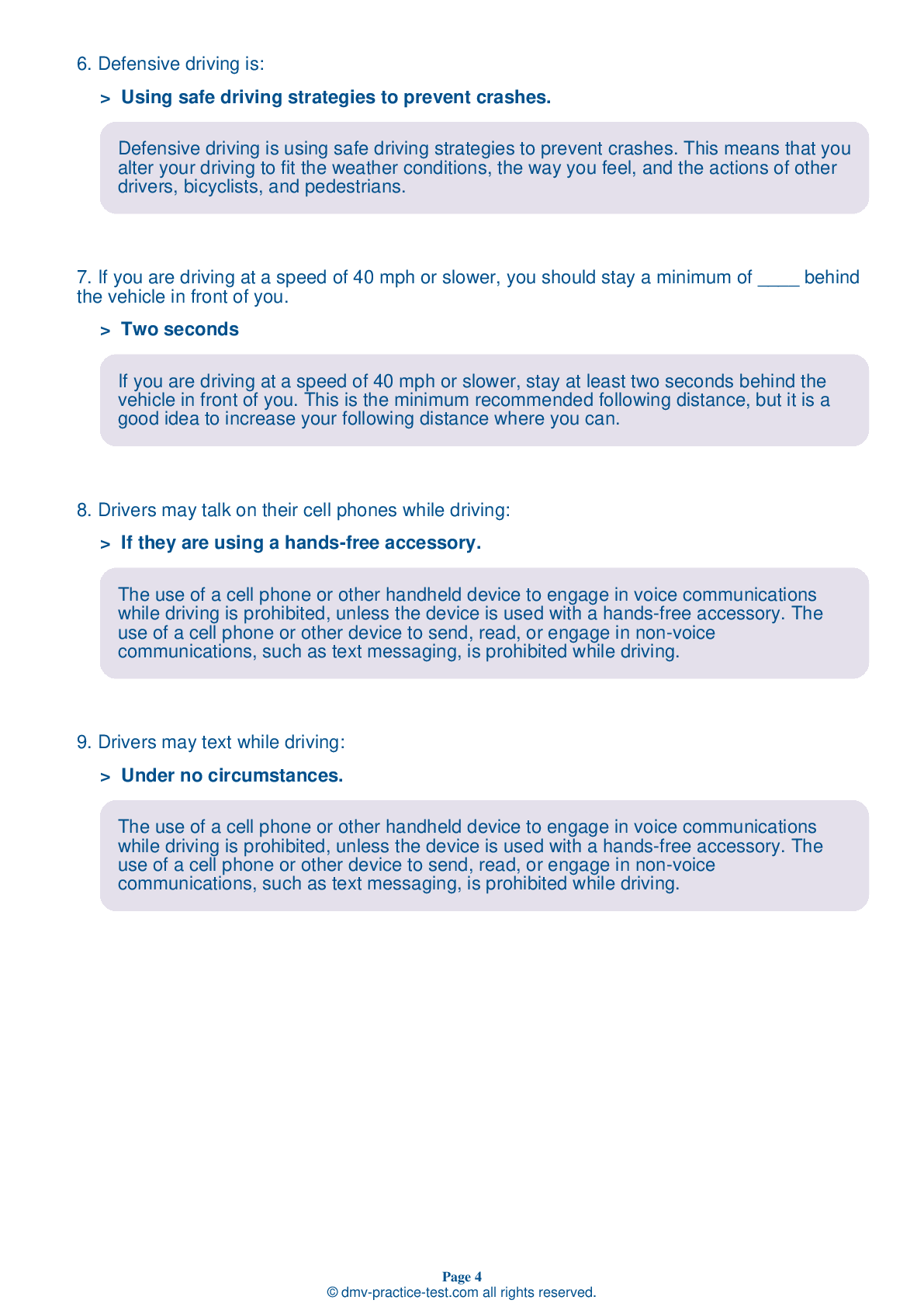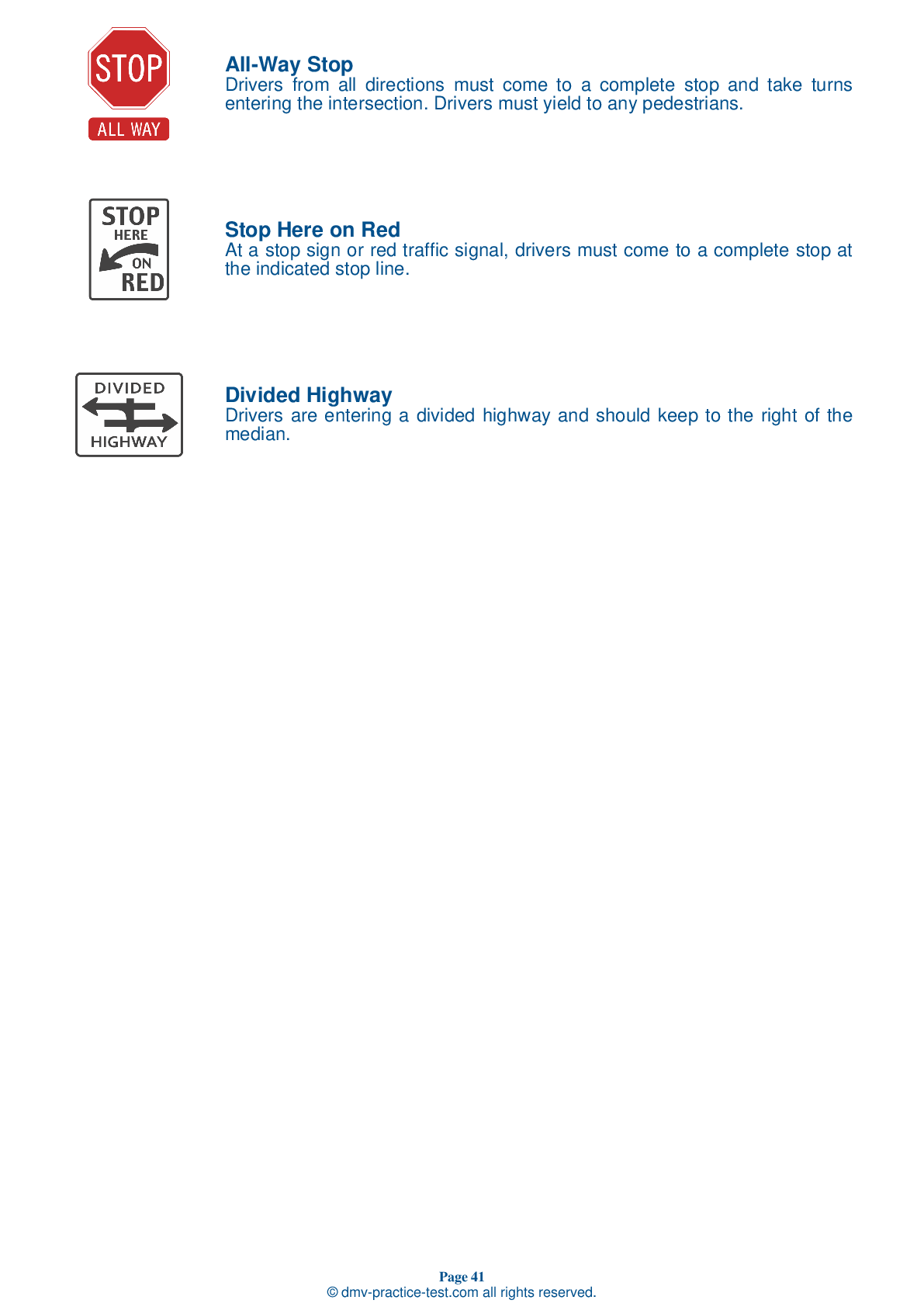FREE Nevada DMV Practice Test #18 Page 7 of 7
The Nevada DMV practise examinations have been updated for January 2026. It includes questions based on the Nevada Driver Handbook's most significant traffic signals and legislation for 2026. Use actual questions that are very similar (often identical!) to the DMV driving permit test and driver's licence exam to study for the DMV driving permit test and driver's licence exam.
On the practise exam, each question gets a tip and explanation to help you remember the concepts. The written component of the official Nevada DMV test will include questions about traffic rules, traffic signs, and driving statutes, as well as knowledge from the Driver Handbook.
To obtain a passing grade, you must correctly answer 40 of the 50 questions. To help you prepare for your instruction permit or driver's licence, take our Nevada DMV practise test.
The DMV exam is available in several languages.
Using any kind of testing assistance will result in an automatic fail, and the DMV may take additional action against your driver's licence, so stay away from it.
43 . If you stop at a railroad crossing with more than one track:
If you are stopped at a railroad crossing with more than one track, do not start moving as soon as a train passes. Wait until you have a clear view down all tracks before you start across. Even where there is only one track, do not start across immediately after a train passes; check again for another train that may be approaching.
44 . You must stop at a railroad crossing when:
You must stop at a railroad crossing when directed to do so by a flagger or stop sign. Stop when flashing red signals and gates are present and operating.
45 . Driving significantly under the speed limit is:
Unless conditions require it, driving significantly below the posted speed limit can be dangerous. A slow driver forces other drivers to take unnecessary risks while trying to pass.
46 . When driving on a road that is not a freeway, drivers should look down the road at least ____ ahead of their vehicle.
Drivers should always look down the road at least 12 seconds ahead of their vehicle, unless they are driving on a freeway. When on a freeway, drivers should look 20 to 30 seconds ahead of their vehicle. Looking ahead may help prevent sudden stops or turns.
47 . Two solid white lines painted across a traffic lane show the boundaries of a crosswalk. As a driver, you should know that:
Crosswalk lines show pedestrians where to safely cross a road or street. Crosswalks may be marked by horizontal lines, vertical lines, or a combination of the two. You must always stop for pedestrians who are in a crosswalk.
48 . To prepare for anything coming up on the road ahead, you should:
Your ability to handle dangerous traffic situations depends largely on searching for and identifying problems before meeting them. Looking far ahead of your vehicle does not mean you should simply stare at the center of the road. You need to continually scan the entire road, including the sides of the road.
49 . Crosswalks are:
Crosswalks exist whether the lines are marked or unmarked. You must stop behind a crosswalk to allow any pedestrians the right-of-way.
50 . When driving on an open highway, you should signal to turn ____ before beginning a turn.
If you wish to change lanes or make a turn, signal to inform other motorists of your intentions. Signals should be activated at least 300 feet before you make a turn when you are driving on an open highway. When using a mechanical turn signal, continue signaling until you have completed the turn or lane change.
See the exact questions that will be on the 2026 Nevada DMV exam.
99.2% of people who use the cheat sheet pass the FIRST TIME
LT gives us an insight on how the cheat sheet provided her with all the study questions she needed before taking her test.
Joe initially studied with the handbook and failed his test, he eventually found us online, studied and pass his test the first time around.



